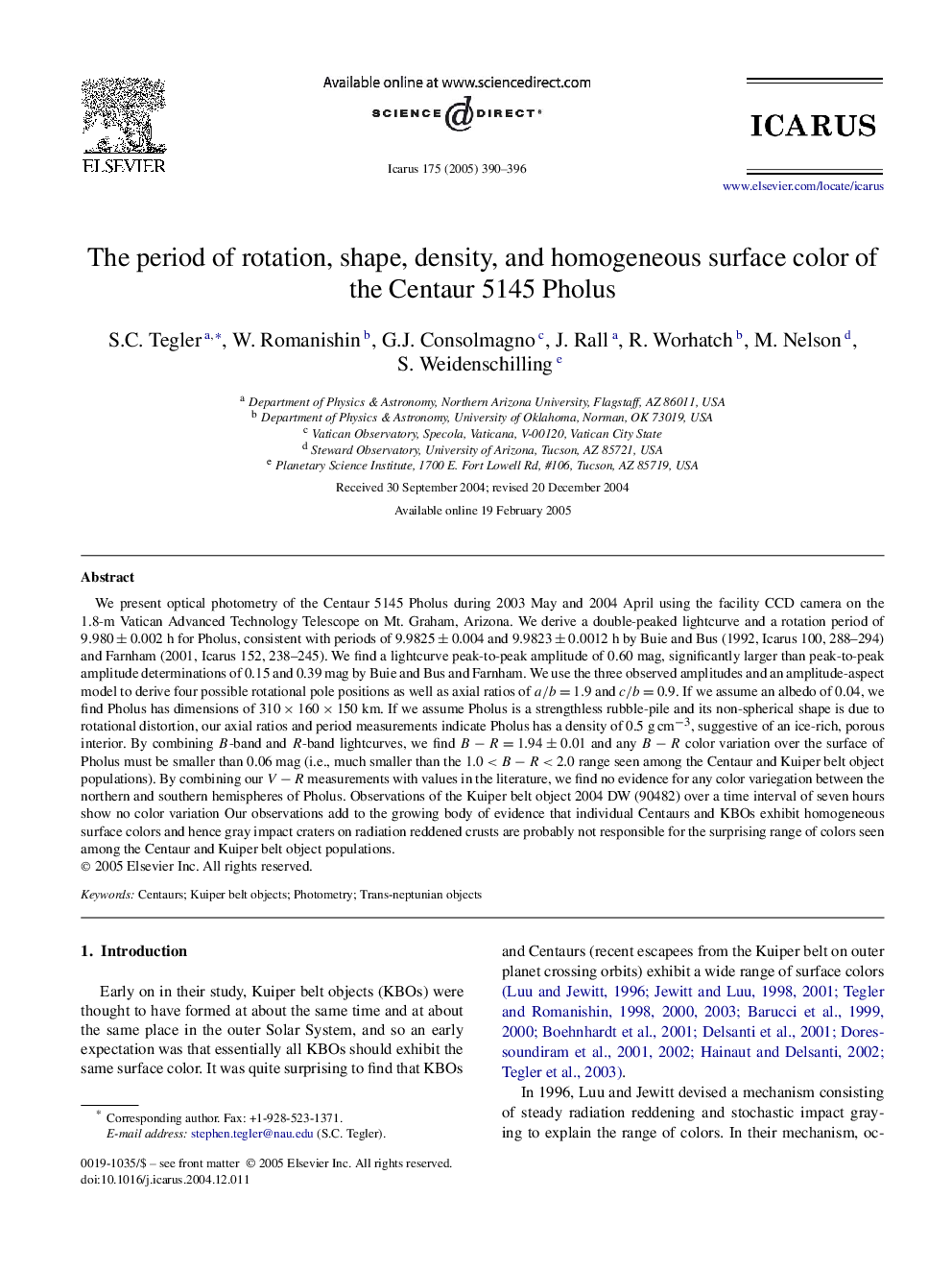| Article ID | Journal | Published Year | Pages | File Type |
|---|---|---|---|---|
| 10702056 | Icarus | 2005 | 7 Pages |
Abstract
We present optical photometry of the Centaur 5145 Pholus during 2003 May and 2004 April using the facility CCD camera on the 1.8-m Vatican Advanced Technology Telescope on Mt. Graham, Arizona. We derive a double-peaked lightcurve and a rotation period of 9.980±0.002h for Pholus, consistent with periods of 9.9825±0.004 and 9.9823±0.0012h by Buie and Bus (1992, Icarus 100, 288-294) and Farnham (2001, Icarus 152, 238-245). We find a lightcurve peak-to-peak amplitude of 0.60 mag, significantly larger than peak-to-peak amplitude determinations of 0.15 and 0.39 mag by Buie and Bus and Farnham. We use the three observed amplitudes and an amplitude-aspect model to derive four possible rotational pole positions as well as axial ratios of a/b=1.9 and c/b=0.9. If we assume an albedo of 0.04, we find Pholus has dimensions of 310Ã160Ã150km. If we assume Pholus is a strengthless rubble-pile and its non-spherical shape is due to rotational distortion, our axial ratios and period measurements indicate Pholus has a density of 0.5 gâcmâ3, suggestive of an ice-rich, porous interior. By combining B-band and R-band lightcurves, we find BâR=1.94±0.01 and any BâR color variation over the surface of Pholus must be smaller than 0.06 mag (i.e., much smaller than the 1.0
Related Topics
Physical Sciences and Engineering
Earth and Planetary Sciences
Space and Planetary Science
Authors
S.C. Tegler, W. Romanishin, G.J. Consolmagno, J. Rall, R. Worhatch, M. Nelson, S. Weidenschilling,
